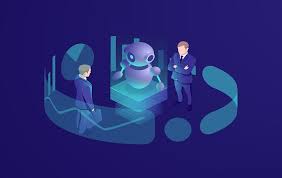The world is changing: in the age of the Internet of Things, consumers use Siri, Google Home or Alexa to buy products and Amazon Go allows them to get them without reaching for their wallets in a physical store.
The customer has always different touch points with companies and is faster and more demanding in his purchasing behavior. Sales people today cannot fail to adapt to these trends that increase demand in companies that introduce certain technologies into their products or services: they must be more productive and efficient in managing the relationships they have with customers.
Contrary to popular belief, artificial intelligence can help them keep up with the times and always be competitive, but we are confident that it will not replace them.
How useful was it to compare with the practices of your colleagues, entrepreneurs and commercials you met at trade fairs or during your business trips?
Even today, you never stop learning from others and from the situations that arise little by little that you go forward in your career to improve, be ready to improvise in case of special needs, but above all faster than your competitors in reaching the goals month by month.
The value of the training you have received since setting foot in the company or starting as a freelancer is invaluable. Like everyone else, we too are noticing that the rules of the game have changed: customers today contact you on WhatsApp, through Messenger or even send you emails at one in the morning, perhaps on Saturday night.
The customer journey , in turn, is changing in the touch points with the company thanks to the digital world, which is having an increasingly strong impact.
For your part, you may have found it difficult to keep up with the hundreds of emails that come to you every week and have a clear picture of all the relationships you are having with your customers. If you’re not getting your usual performance lately or the company can’t keep up with the competition, it’s not your fault – the world is changing (and you should do it accordingly).
The more you want to increase your sales, the more there is a need to generate new contacts that interface with you and therefore increase the effort for the tasks you perform daily to maintain your productivity, or even be faster than you already are.
Imagine that your agenda is already full and you don’t have time to dedicate yourself to that customer that the marketing has just passed on to you: refusing or postponing the chat with him too much would risk the loss.

Your new colleague: artificial intelligence
Artificial intelligence today is a very hot trend: it seems that everyone has software or technological services that help them achieve their goals more efficiently.
But you manage a sales team and you have results to achieve this month and next: you don’t have time to dedicate yourself to something new, your agenda is overflowing with appointments and it’s hard to change your way after thirty years of experience.
For the sales manager, things that are fashionable in a certain period are useless, consequently even artificial intelligence can be considered as such, unless it can really help to be more efficient in achieving one’s goals.
Artificial intelligence promises to become that colleague that makes you learn, sell and earn more.
Experience shows that the more you know your customers, the better you are able to customize your offer for them and the more likely you are to close deals.

The key is to know your customers in depth and it shouldn’t be a complicated process.
Today, thanks to inbound sales it is possible to get to know the people potentially interested in your company (and target) even before coming into direct contact with it and the more time passes, the more similar tools, based on artificial intelligence, will impact on the methods of acquiring data from customers (and even pay them to get them because of blockchain and new marketing tools ) .
Now, in fact, we are talking about intimate computing: the ability of machines to know our purchasing habits, travel habits, interests, etc.
Think of Amazon Echo which allows you, as a consumer, to ask specific questions and place product orders in minutes (while providing data to companies), but what would its potential be if it were connected to your sales activities?
Imagine walking into the office and asking “Hey Siri, should I call this company today?”, Or “Show me my prospects, which of them should I email and when?”
Your assistant, now, is already something artificial: computer, smartphone, CRM. Soon it may be something you will talk to get strategic information for your work.
Artificial intelligence means less administrative and back-office work
A commercial can only be considered productive when he spends his time selling. Nobody wants to enter emails in the CRM or write down all the communication history of customers instead of staying on the phone or being at high-value meetings. This is exactly why AI comes into play: it automates activity logging, identifies high-priority emails, and creates new leads for you.
Through technology, the working hours spent carrying out administrative tasks are reduced because they are automated.
By using the artificial intelligence of modern-day CRMs , it is possible to eliminate many of the tasks that make you do monotonous and boring tasks that you shouldn’t be doing. The effects are far-reaching and include lower cognitive load, greater job satisfaction, and stronger relationships and relationships (including with the customer) within the sales organization.
Artificial intelligence applied to CRMs makes the sales process successful

Artificial intelligence is increasingly entering the Middle of the Funnel (MOFU) of the sales process.
There are lead management applications that help sales reps support follow-ups until the last stages of inbound sales. It is not new, however, if we think of email marketing on several levels.
Automation now extends to the B2B sales process, where automated cold calls can arrange face-to-face meetings, shortening the sales cycle. Sniffing out a good opportunity is certainly something commercials can learn over time, but why wait when AI can do it for you?
AI can not only rank opportunities (depending on whether they are doing well or badly), but also predict what solutions and discounts to offer customers based on previous successes.
According to Internal Results , 40% of marketers believe their sales teams are not equipped with the right information to interact with potential customers, and artificial intelligence would allow them to do so more efficiently.
The relationship between the marketing and sales departments improves
Historically, there has been tension between marketing and sales: Marketers tend to resent salespeople for not passing high-quality leads to them. At the same time, sellers tend to complain about marketing for low conversion rates.
The so-called marketing is missing
AI has the potential to eliminate this tension by helping marketers increase the quantity and quality of leads and automatically implement marketing .
A Harvard Business Review study found that companies using artificial intelligence had an impact on sales growth which includes: 50% increase in meetings with prospects, lower sales costs since 40-60% and the reduction of the call time by 60-70%.
Artificial intelligence provides sales forecasts and analytics
Today, thanks for example to the CRM dashboards, it is possible to forecast sales and have a clear picture of what to expect from the current month.
Thanks to the data acquired from the previous months, the artificial intelligence automatically provides sales targets month by month, also providing recommendations to consider to improve the whole process.
Analyzing previous won or lost opportunities is essential to improve your sales process and face new ones : artificial intelligence helps you to have one or all information at your fingertips and to analyze it.
Lead prospecting is automated
Prospecting is hard work. Knowing which lead to contact and at what time makes you more productive and leads to more success, but understanding it can be really time-consuming given all the reports to analyze.
Machine learning identifies lead patterns to determine which ones are most likely to be converted into a deal, by examining many factors, including geography, company size, and roles – actions needed to move down the conversion funnel.
This is a dynamic process and artificial intelligence is the assistant that does it for you in real time and in an always updated way.
Artificial intelligence means faster and more effective customer service
In addition to making their purchases through online platforms, customers are starting to buy through bots.
Through machine learning and natural language processing, chatbots are efficient in responding to customers in our place: on suppliers’ websites, they can respond to several customers at the same time, place orders, manage shipping methods and sometimes even payments.
With higher and faster response rates, companies keep shoppers happy and solve problems before they arise.
In short, artificial intelligence tools for marketing are beginning to become essential.
How do you do all this?
The hype for artificial intelligence is very strong and everyone claims to have the technology in their products and sales practices, but don’t get excited about introducing a similar solution by going all-in – the introduction can be incremental. to better adapt to corporate principles.
This can happen through four stages:
Support commercials
Optimize your customer data
Optimize your sellers’ data
Customize your artificial intelligence

1. Support commercials
The first phase is about acquiring better data by providing tools for the sales team.
With calls and emails automatically tracked and recorded (even those that have not been answered) , data becomes pristine and useful for artificial intelligence.
The system could automatically provide us with an answer of this type based on the data and models collected:
“These calls / emails made in these moments to these companies / people / geographic areas have been successful;
these other calls / emails made in these moments to these companies / people / geographic areas have not been successful.
Make more calls than the first type and less than the second. “
To get immediate benefits from the first phase, sellers need tools that make them faster and more effective, such as:
- Emails that include links to the sales calendar to automatically schedule appointments
- Templates-based emails to save time (scheduled and automated)
- Phone calls that appear to the prospect with a local number to increase the response rate, etc.
- The revenue increase of the first phase can be 10% or more , based solely on the productivity gains observed by the salespeople.
This is immediate ROI , but the real benefit of the first phase is data acquisition, which is only fully realized in the second phase.
2. Optimize your customer data
Once all salespeople are using certain tools and their businesses, successes and failures have been tracked for a few months, we are ready to move on to phase two. With a clear database, CRM now becomes useful for AI thanks to our efforts.
- Artificial intelligence basically needs four categories of data:
- Descriptive data : who are the prospects and what characteristics do they have?
- Behavioral data : what actions were taken? (Calls, emails)
- Contextual data : what are the prevailing conditions at a given moment (weather, economy, etc.)
- Results-based data : What have been the results of our activities?
a. For a phone call : was it answered?
b. For an email : Has it been opened?
c. For a lead : Did he become a potential customer?
d. For a potential customer : Has the sale been closed?
With these four categories of data, artificial intelligence can work its magic. Machine learning is basically a huge correlation engine. In this case it combines the data from (A), (B) and (C) which result in desired scenarios (D).
In these cases, artificial intelligence tells us that:
- Phone calls between 13:00 and 15:00 on rainy Sundays to sales departments at companies in the Southeast Middle East market tend to be effective, while …
- Phone calls between 1pm and 3pm on rainy Tuesdays to HR managers in developing companies on the Tyrrhenian coast tend not to be productive.
- With all the data in place, artificial intelligence tells us which prospects to carry out certain activities, under what conditions and at what times in a priority manner.
Combined with the first phase, the second pays off 20% more on the company’s turnover.
3. Optimize your sellers’ data
Now that we’re tracking and optimizing all sales activities and prioritizing prospects for maximum performance, we can turn our gaze to the sales team.
Not all salespeople are equally productive: out of a group of 1000 salespeople, 200 might be excellent at building a pipeline, 400 at closing deals, 300 at both, and 100 might not be effective at either.
For a salesperson who wants to build a team that can achieve optimal monthly goals, it is important to understand the performance level of each of them.
Artificial intelligence can instantly assess the historical performance of thousands of commercials , identifying the behaviors and attributes that separate one group from another. This immediately highlights coaching or improvement opportunities for each salesperson’s pain points.
It is important for a company to understand certain parameters so that productivity is always at its maximum potential.
In fact, there are also implications for the hiring and management of salespeople: An empathic personality will still be important, but beyond their relational skills, salespeople will be successful based on their ability to understand and interpret data, work effectively with artificial intelligence and move quickly on opportunities.
The third phase is based on the data from phases one and two, but changes the perspective of the analysis from the buyer to the commercial. Optimizing your sales team can generate a revenue increase of 20% or more.
4. Personalize artificial intelligence by placing it in your context
With good data on buyers, sellers, and how opportunities make their way through the sales cycle, the remaining opportunities to leverage AI to increase revenue fall into two categories:
- More data / data sources
- Different questions
The first includes all the data that does not feed into a CRM, but which could be useful for prioritizing prospects and activities.
For example: if after-sales uses or average customer spend data helps to prioritize our targets, it would be useful to consider them to formulate strategies in this regard.
Alternatively, we could ask ourselves quite different questions: rather than “to which consumers to sell and how can we engage them?”, We could ask ourselves “which seller is able to sell a new product better?” The data can also answer these questions to create, for example, new product funnels.
Make AI a holistic technology
From the management group to after-sales support, artificial intelligence is already making its way into many companies and is allowing them to achieve important goals: better quality products and competitive advantage.
If you intend to introduce artificial intelligence into your activities, you need to look at what the company does in its processes from a general point of view before designing and implementing a strategy. When it comes to finding areas where AI can have a major strategic impact, ask yourself the following questions:
- What are our vulnerabilities?
How could other companies outperform us?
Try this exercise: Get a team together to imagine how your business could potentially fail in five years.
Consider the worst-case scenarios and think what can protect you from getting into the situation this can be the most suitable means to create a solid strategy that might open the door to AI-driven innovation. Next, examine your internal processes and key interdependencies from both a technological and an interdepartmental point of view.
Introduce the most efficient technologies for your business scenario
Creating a technological landscape that everyone can understand in a basic way will be difficult, but it is essential to open innovation opportunities in every branch of the organization.
When evaluating software and platforms, think seriously about how these technologies might align departments (or detach them). For example, allowing multiple departments to operate on a single platform will allow for easier adoption of AI in the future.
Some examples of human functions augmented by artificial intelligence could be:
- An employee interacting with an internal bot to find information that is important to their job
- A sales employee who quickly creates personalized content for a potential customer assisted by artificial intelligence
- A content strategist who understands exactly which topics will bring the most traffic thanks to technology
- A new employee guided through a customized AI-assisted business practice alignment program
Train your staff properly
Your company’s employees probably think of AI as a technology that will steal their jobs, and your job will be to discredit this theory. Build your entire organization on the foundation of an interconnected infrastructure and offer theoretical innovation opportunities for all departments.
Ask for ideas, solutions, methods to simplify tasks, ways to combat inefficiencies and increase productivity; get constant feedback on activities to collect strategic information for the improvement of individual elements within business processes.
People will feel more engaged and proactive in certain business practices if they have a clear understanding of how the company operates and what it needs.
If everyone had this vision, the entry of innovations will be facilitated (many of which could be based on artificial intelligence). The next step will be to prepare your team to adopt certain practices, but this time they will already be convinced to do so. The ideal would be to create an interconnected corporate culture on certain topics and have employees always ready for new challenges, even outside the departments they work for.
What could the future scenarios be?
The introduction of artificial intelligence is now underway in many sectors, but it will take some time before it is mature and fully “installed” in the various scenarios. Within five years, virtually every salesperson will have a smart assistant who will use intimate computing to deliver rich context at every stage of the sales process, from initial contact to closing.
While today’s assistant salesperson is a device (like a smartphone or laptop), within 10 years it will become something to ask about by speaking, as is the case with the Amazon Echo. Artificial intelligence will be incorporated into a system that will “live” in the office and collect data all day without stopping at night.
Let’s say that in 20 years the commercial interactions will take place through virtual reality (VR): at that point, we will have to think about what it means to involve a customer in virtual reality and create a sales experience within it, adapting the entire process. The same could happen with augmented reality, which already now uses omnichannel solutions to facilitate the purchase of products.
The challenge lies in learning to trust artificial intelligence, implementing it step by step.
Technological progress has always seen two sides: those who declare it useless and those who are very enthusiastic about it. The hope is to position itself exactly in the middle, with one eye on how certain technologies can make the business environment more productive and the other on future developments, already anticipating the competition with an innovation mentality.
Many salespeople are concerned that all of these technological advancements will lead to the loss of their jobs, but that is not the case.
The “human touch” will have to focus more on exception management, tolerate ambiguities, use judgment, shape the strategies and questions that machines will allow to answer and manage an increasingly complex network of relationships with employees, suppliers, partners and customers .
Open the doors to artificial intelligence and next generation CRMs
If you lead a sales team, you cannot introduce artificial intelligence without the necessary equipment and if you are planning to start now, there are already several tools that allow you to do so.
With the four steps described above, not only do you have a return on investment, but strategically speaking you gain a competitive advantage over those who do not exploit artificial intelligence (just yet).
Not all companies are now using artificial intelligence solutions, especially in Italy and yours may be among the few that are anticipating the introduction of technologies that make the sales department more productive.
In the early days of cloud computing, there was a certain level of skepticism: “Is my data really safe? Can I really access my files whenever I want? ”. Now we don’t think twice about using this type of technology that has undoubtedly made us more productive.
The same thing happens today with artificial intelligence: Often, commercials still don’t completely trust a recommendation provided by the technology even though the data supports it.
We could try to call it “augmented intelligence” to alleviate skepticism , since it does nothing but allow you to achieve results faster and does not replace the commercial figure (who in turn must enter data, analyze scenarios and contact customers).
While it is true that 85% of all businesses have the potential to be automated with today’s technology (gathering customer or product information to determine customer needs, processing sales or other transactions, acquiring orders for products by customers), don’t forget considering a number of sales manager’s practices that involve strategic decision making and employee training as well coaching cannot be automated.
The sole purpose of AI is to help sales be more productive and profitable , but it can only happen by opening up to this new type of relationship and information.

